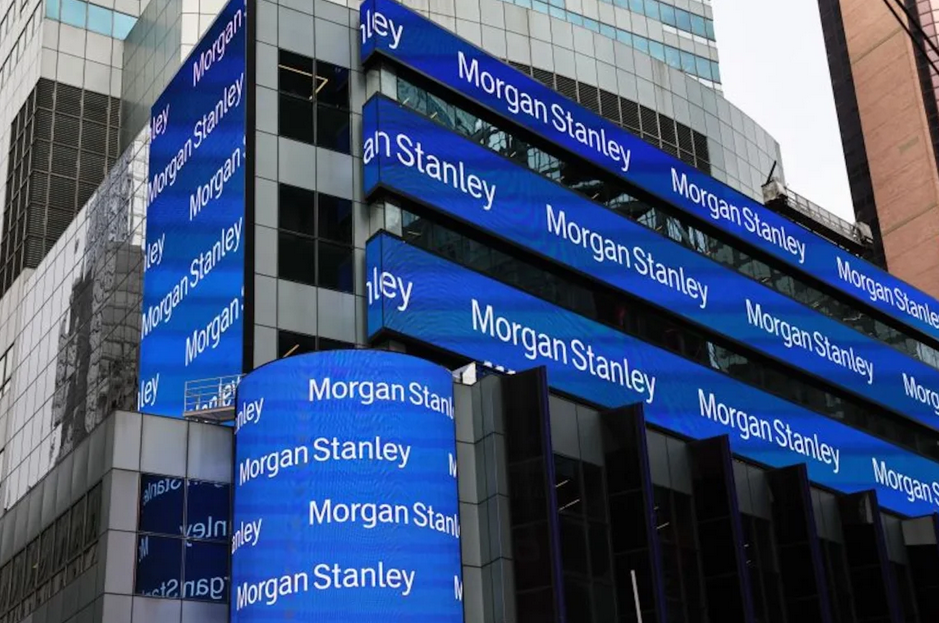Morgan Stanley Warns of Two Major Disconnects Threatening the Market Rally
While rising short-term Treasury yields may suggest confidence in economic growth, the steady climb in 10-year yields toward 4.5% is more co

Quick overview
- Morgan Stanley warns investors to be cautious despite the stock market's bullish signals, citing high interest rates and a weakening dollar as potential risks.
- The S&P 500 has rebounded significantly, but concerns about complacency and overvaluation persist, according to J.P. Morgan CEO Jamie Dimon.
- Lisa Shalett from Morgan Stanley highlights three major market disconnects, including rising Treasury yields and the implications of increased U.S. debt.
- The weakening U.S. dollar may deter foreign investment, further impacting equity valuations and signaling a potential shift in market dynamics.
Although the stock market appears to be entering a new bullish cycle, Morgan Stanley is warning that ignoring key signals—such as high interest rates, and a weakening dollar could prove costly for investors.

After shaking off a recent credit rating downgrade from Moody’s, the S&P 500 closed Monday up 19.68% from its April low—just shy of the 20% threshold traditionally used to mark the start of a bull market.
That same session also saw J.P. Morgan CEO Jamie Dimon deliver a stark warning about the “extraordinary complacency” he believes is dominating today’s sharp, V-shaped market recovery. His comments add to a growing chorus of caution.
Lisa Shalett, Chief Investment Officer at Morgan Stanley Wealth Management, added to the concerns, warning that equity investors are overlooking three major market disconnects that could ultimately backfire.
According to Shalett, investors appear “unshakably confident” that the recent pause in U.S.-China tariffs has permanently removed the uncertainty around the trade war—fueling a rally that’s pushed stocks back to January 1 levels.
“Such a rebound—coming amid continued downward revisions to earnings estimates—implies even higher forward valuation multiples than at the beginning of the year,” she wrote in a note. In other words, investors are willing to pay significantly more for each dollar of expected earnings in the coming year. “While we’ve expressed skepticism about this shift, other asset classes are also signaling that the path forward may not be so clear,” she added, pointing to warning signs from three key indicators.
Bonds and Yields
Shalett notes that while rising short-term Treasury yields may suggest confidence in economic growth, the steady climb in 10-year yields toward 4.5% is more concerning. “Wider term premiums and higher real rates are drawing attention to U.S. debt levels and looming debates over tax policy, the debt ceiling, and the federal budget,” she explained.
Most proposals related to those fiscal issues would add roughly $2 trillion in new debt—potentially pushing interest expenses up by 50% over the next decade, she warned. “By definition, that implies higher rates for longer and lower equity valuation multiples.”
The U.S. Dollar
The second disconnect is the persistent weakness of the U.S. dollar. Since peaking on January 8, the dollar has dropped about 8% against major currencies, seemingly the result of capital flows and a reconfiguration of global reserves.
“It’s especially notable that oil and the dollar are now positively correlated—an unusual dynamic, since they typically move in opposite directions,” Shalett pointed out. If the dollar is indeed entering a new secular regime of relative weakness, as Morgan Stanley anticipates, that could also imply lower equity valuations—this time through reduced foreign capital inflows. A weaker dollar, in other words, could deter international investors from U.S. markets.
- Check out our free forex signals
- Follow the top economic events on FX Leaders economic calendar
- Trade better, discover more Forex Trading Strategies
- Open a FREE Trading Account